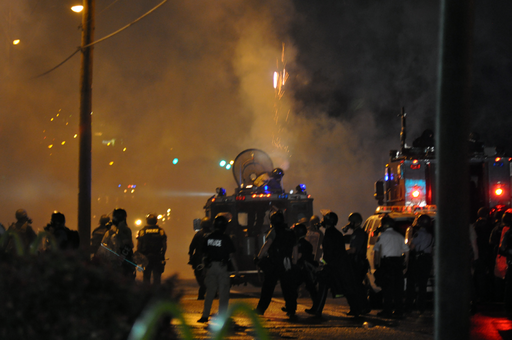
As I write this, BBC reports that UK Foreign Secretary Liz Truss is “urgently” investigating reports of a chemical weapons attack in the Ukrainian city of Mariupol. The US Department of Defense finds the reports “deeply concerning.”
Usually when the western governments start quacking about “chemical attacks,” it means they’re planning to take action of some kind — airstrikes in Syria, sanctions on Russia, what have you — and are looking for an excuse.
This doesn’t look like an exception to that rule: Further down in the story, Ukrainian Deputy Defence Minister Hanna Maliar identifies the likely weapon as “phosphorous ammunition.”
That would most likely be white phosphorous, an element not classed as a chemical weapon under the Chemical Weapons Convention. It’s used as a component in smoke, illumination, incendiary, and tracer rounds for everything from small arms to large artillery, as well as in grenades, by most major militaries on Earth.
In theory, it’s illegal to use white phosphorous to attack “personnel,” but acceptable to use it on “equipment.”
That’s a pretty big loophole. As an 81mm mortarman in the US Marine Corps, I often trained on what we called “shake and bake” missions, involving a mix of white phosphorous and high explosive rounds. The justification? We would be firing at the enemy’s “equipment.” That would include their uniforms, canteens, etc. If they chose to stay with that “equipment,” well, that was their problem.
If the weapon in question is indeed white phosphorous, calling the incident a “chemical” attack is neither legally accurate nor novel. It’s nasty stuff — it burns incredibly hot and water won’t put it out — but it’s been in wide use since World War One. Including, probably, by both sides in the Ukrainian conflict.
In truth, chemical weapons aren’t especially useful on the modern battlefield. Soldiers of all nations carry, and are trained to use, protective gear. Such weapons have some utility in short-term “territory denial” — making the enemy not want to enter a given space for fear of exposure. They’re not a game-changer, though. And, with one exception, most regimes won’t use them precisely because the effects aren’t worth the negative reactions.
That exception is CS, commonly known as “tear gas.”
Unlike white phosphorous, “tear gas” IS banned under the Chemical Weapons Convention. It can’t legally be used on the battlefields of international conflicts.
But most regimes, including the US government, freely use it on “their own people” (another phrase often used in pre-escalation propaganda) to break up protests, flush out suspects in standoffs with police, etc.
CS, which is highly flammable, was the agent used in the US government’s fiery 1993 massacre of 76 Branch Davidians, including 25 children, near Waco, Texas.
The US also retains stockpiles of deadlier agents, which it agreed by treaty in 1997 to destroy by 2007. What’s the holdup?
Given the American government’s own retention of several actual chemical weapons and frequent, even casual, use of another, calling a supposed white phosphorous attack in a war zone “deeply concerning” comes off as, at best, insincere and opportunistic.
Thomas L. Knapp (Twitter: @thomaslknapp) is director and senior news analyst at the William Lloyd Garrison Center for Libertarian Advocacy Journalism (thegarrisoncenter.org). He lives and works in north central Florida.
PUBLICATION HISTORY
